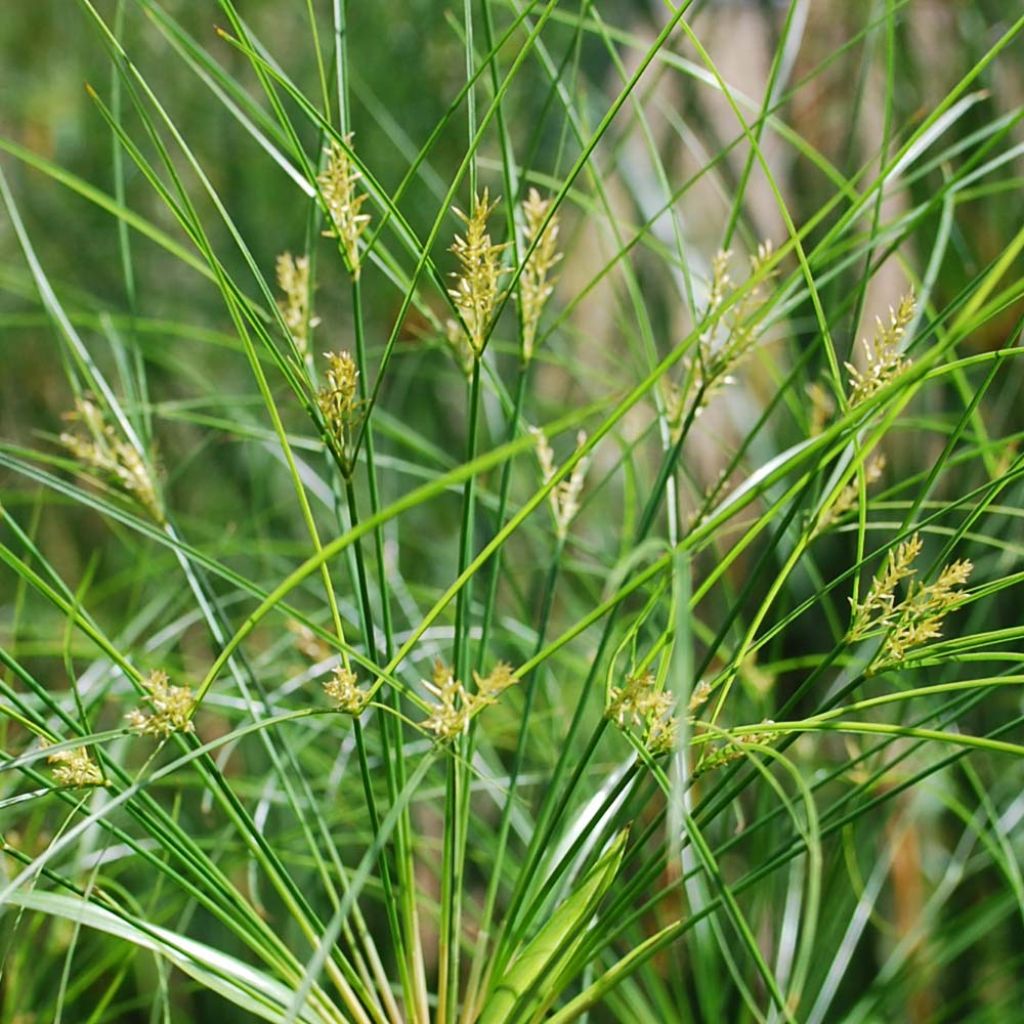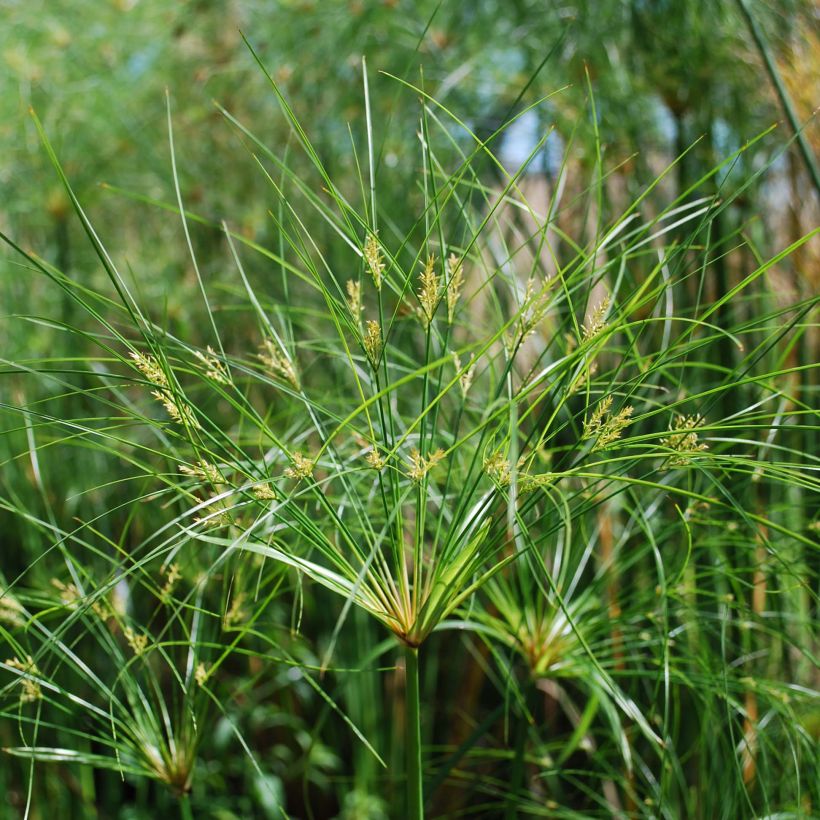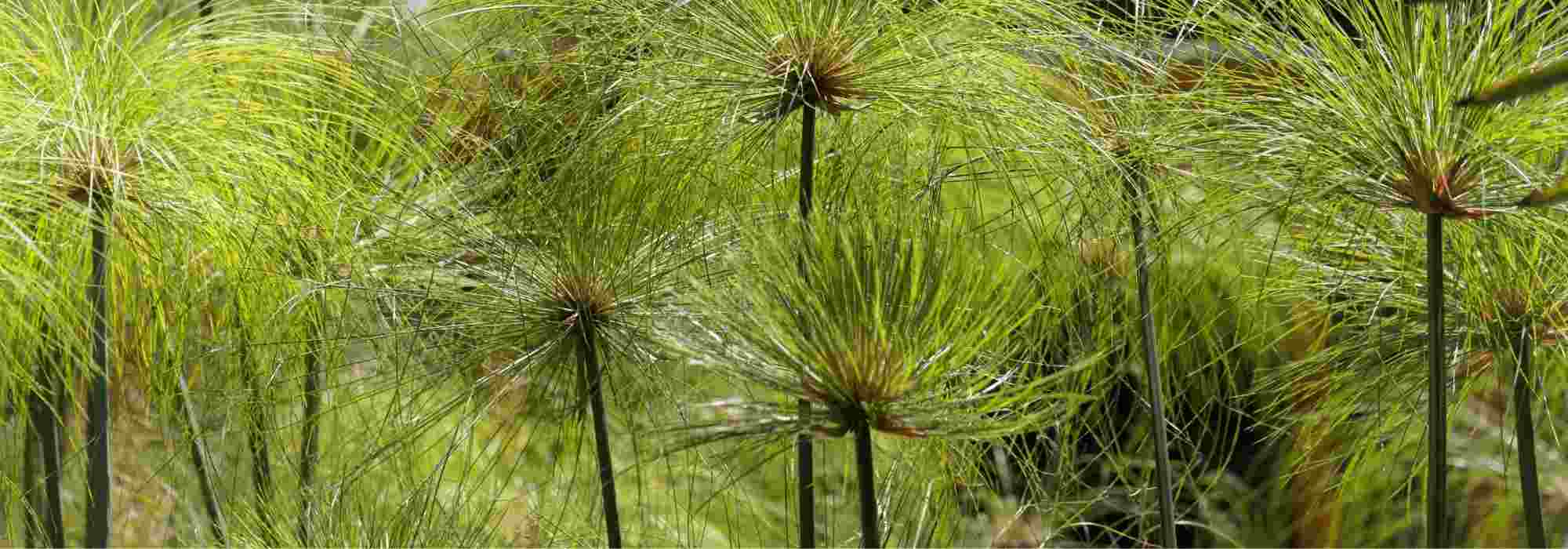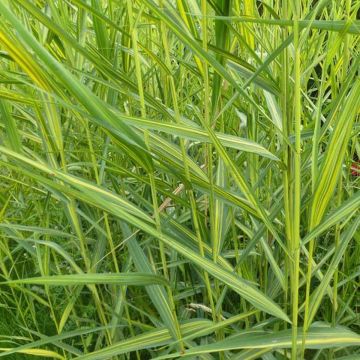

Cyperus papyrus Cleopatra - Papyrus


Cyperus papyrus Cleopatra - Papyrus
Cyperus papyrus Cleopatra - Papyrus
Cyperus papyrus Cleopatra
Papyrus Sedge, Paper reed, Egyptian paper rush, Nile papyrus
beautiful col
celestino, 27/10/2019
Special offer!
Receive a €20 voucher for any order over €90 (excluding delivery costs, credit notes, and plastic-free options)!
1- Add your favorite plants to your cart.
2- Once you have reached €90, confirm your order (you can even choose the delivery date!).
3- As soon as your order is shipped, you will receive an email containing your voucher code, valid for 3 months (90 days).
Your voucher is unique and can only be used once, for any order with a minimum value of €20, excluding delivery costs.
Can be combined with other current offers, non-divisible and non-refundable.
Home or relay delivery (depending on size and destination)
Schedule delivery date,
and select date in basket
This plant carries a 6 months recovery warranty
More information
We guarantee the quality of our plants for a full growing cycle, and will replace at our expense any plant that fails to recover under normal climatic and planting conditions.
Would this plant suit my garden?
Set up your Plantfit profile →
Description
The Cyperus papyrus Cleopatra: what prettier name could we have chosen to baptise this dwarf version of the majestic Egyptian Papyrus? This variety is similar to the main type, endowed with the same ornamental qualities, but miniature in all its parts. It does not have leaves, but forms long elegant stems that unfurl at their ends into tufts of very fine bracts that make up a kind of feathery umbrella. This variety of modest size is perfect for exotic compositions, on the edge of a pond, or in a large pot kept moist on the terrace.
The Cyperus papyrus or Nile Papyrus, from the family Cyperaceae, is native to the banks of the Nile. It used to form, in the bed and on the banks of this great Egyptian river, mats or floating islands, or large impenetrable thickets, sometimes rising to 5 m (16.4 ft) in height. Following the development of the banks and the construction of various infrastructures such as large dams, it has become rare in its original habitat. It is now cultivated in all temperate regions for its fantastic ornamental qualities, in the garden in the mildest climates, but also in a greenhouse or conservatory. It has given rise to some interesting cultivars, such as the dwarf form Cleopatra.
The Cleopatra variety develops many leafless stems from its rhizomes, with a triangular section of 0.5 cm (0.2 in) for the largest, reaching about 50 cm (19.7 in) in height. It spreads laterally, without theoretical limit. Each stem bears at its end a crown of very fine bracts – a kind of dense, light green mass, composed of thread-like stems 10 to 15 cm (3.9-5.9 in) long, resembling a feather duster when the plant is young. In late spring, a feathery inflorescence appears in the centre of each crown, composed of very small cream-coloured flowers, turning brown when ripe. These flowers give rise to seeds that will be dispersed by the wind. The Cyperus papyrus reproduces both by disseminating its seeds and vegetatively, via lateral growth of its rhizomes. Unlike other species, it does not propagate by immersing its heads in water.
The papyrus, a wonderful bank plant in very mild climates, is also a very beautiful species for the terrace, and quite easy to cultivate as long as the soil in which it is installed remains always moist. It will work wonders around a small above-ground pond arranged on the terrace; for example, in the company of African lilies, Physostegia virginiana or restios, or other plants that resemble grasses. It is likewise splendid near water sources. These perennials will seduce enthusiasts of exotic plants because of their bamboo-like silhouette, or their long unusual flowering. Combining it in open ground or in a pot with dwarf cannas with purple or green foliage, Dierama, Iris versicolor or even Gomphostigma virgatum is always successful.
Cyperus papyrus Cleopatra - Papyrus in pictures




Flowering
Foliage
Plant habit
Botanical data
Cyperus
papyrus
Cleopatra
Cyperaceae
Papyrus Sedge, Paper reed, Egyptian paper rush, Nile papyrus
North Africa
Other Cyperus
View all →Planting and care
Plant the Cleopatra Papyrus in a very sunny location, in a mixture of compost and garden soil kept constantly moist, for example by placing a deep saucer filled with water under the pot. From April to late September, apply liquid fertiliser twice a month. Cut back the dry stems in November. Overwinter your papyrus frost-free, but in a very sunny, minimally heated room. If you cultivate the papyrus indoors, it is imperative to regularly mist its foliage, due to the often overly dry atmosphere of our interiors. During the warm season, from April-May to October, your pot of papyrus can adorn the terrace or balcony, in full sun. Exposing it to direct sunlight should be done gradually, to avoid scorching the foliage after winter. Divide your papyrus when it becomes too large, and give some as gifts to your friends and neighbours. Keep an eye out for the appearance of whiteflies or red spiders indoors. These parasites thrive in dry and warm atmospheres.
In the ground, if the temperatures do not drop too low in winter, the submerged stump can survive and the plant can regenerate in the following spring. In regions far from the seaside, it is essential to cultivate the papyrus in a pot.
Multiply by dividing the stumps from spring to summer; or by sowing, but this is more delicate to carry out.
Planting period
Intended location
Care
Planting & care advice
-
, onOrder confirmed
Reply from on Promesse de fleurs
Similar products
Haven't found what you were looking for?
Hardiness is the lowest winter temperature a plant can endure without suffering serious damage or even dying. However, hardiness is affected by location (a sheltered area, such as a patio), protection (winter cover) and soil type (hardiness is improved by well-drained soil).

Photo Sharing Terms & Conditions
In order to encourage gardeners to interact and share their experiences, Promesse de fleurs offers various media enabling content to be uploaded onto its Site - in particular via the ‘Photo sharing’ module.
The User agrees to refrain from:
- Posting any content that is illegal, prejudicial, insulting, racist, inciteful to hatred, revisionist, contrary to public decency, that infringes on privacy or on the privacy rights of third parties, in particular the publicity rights of persons and goods, intellectual property rights, or the right to privacy.
- Submitting content on behalf of a third party;
- Impersonate the identity of a third party and/or publish any personal information about a third party;
In general, the User undertakes to refrain from any unethical behaviour.
All Content (in particular text, comments, files, images, photos, videos, creative works, etc.), which may be subject to property or intellectual property rights, image or other private rights, shall remain the property of the User, subject to the limited rights granted by the terms of the licence granted by Promesse de fleurs as stated below. Users are at liberty to publish or not to publish such Content on the Site, notably via the ‘Photo Sharing’ facility, and accept that this Content shall be made public and freely accessible, notably on the Internet.
Users further acknowledge, undertake to have ,and guarantee that they hold all necessary rights and permissions to publish such material on the Site, in particular with regard to the legislation in force pertaining to any privacy, property, intellectual property, image, or contractual rights, or rights of any other nature. By publishing such Content on the Site, Users acknowledge accepting full liability as publishers of the Content within the meaning of the law, and grant Promesse de fleurs, free of charge, an inclusive, worldwide licence for the said Content for the entire duration of its publication, including all reproduction, representation, up/downloading, displaying, performing, transmission, and storage rights.
Users also grant permission for their name to be linked to the Content and accept that this link may not always be made available.
By engaging in posting material, Users consent to their Content becoming automatically accessible on the Internet, in particular on other sites and/or blogs and/or web pages of the Promesse de fleurs site, including in particular social pages and the Promesse de fleurs catalogue.
Users may secure the removal of entrusted content free of charge by issuing a simple request via our contact form.
The flowering period indicated on our website applies to countries and regions located in USDA zone 8 (France, the United Kingdom, Ireland, the Netherlands, etc.)
It will vary according to where you live:
- In zones 9 to 10 (Italy, Spain, Greece, etc.), flowering will occur about 2 to 4 weeks earlier.
- In zones 6 to 7 (Germany, Poland, Slovenia, and lower mountainous regions), flowering will be delayed by 2 to 3 weeks.
- In zone 5 (Central Europe, Scandinavia), blooming will be delayed by 3 to 5 weeks.
In temperate climates, pruning of spring-flowering shrubs (forsythia, spireas, etc.) should be done just after flowering.
Pruning of summer-flowering shrubs (Indian Lilac, Perovskia, etc.) can be done in winter or spring.
In cold regions as well as with frost-sensitive plants, avoid pruning too early when severe frosts may still occur.
The planting period indicated on our website applies to countries and regions located in USDA zone 8 (France, United Kingdom, Ireland, Netherlands).
It will vary according to where you live:
- In Mediterranean zones (Marseille, Madrid, Milan, etc.), autumn and winter are the best planting periods.
- In continental zones (Strasbourg, Munich, Vienna, etc.), delay planting by 2 to 3 weeks in spring and bring it forward by 2 to 4 weeks in autumn.
- In mountainous regions (the Alps, Pyrenees, Carpathians, etc.), it is best to plant in late spring (May-June) or late summer (August-September).
The harvesting period indicated on our website applies to countries and regions in USDA zone 8 (France, England, Ireland, the Netherlands).
In colder areas (Scandinavia, Poland, Austria...) fruit and vegetable harvests are likely to be delayed by 3-4 weeks.
In warmer areas (Italy, Spain, Greece, etc.), harvesting will probably take place earlier, depending on weather conditions.
The sowing periods indicated on our website apply to countries and regions within USDA Zone 8 (France, UK, Ireland, Netherlands).
In colder areas (Scandinavia, Poland, Austria...), delay any outdoor sowing by 3-4 weeks, or sow under glass.
In warmer climes (Italy, Spain, Greece, etc.), bring outdoor sowing forward by a few weeks.






















































